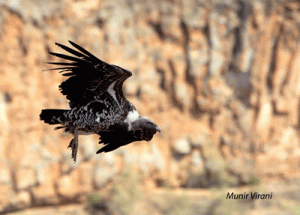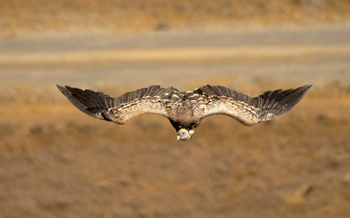Effect of human activities on scavenger guild structure and function in East Africa. A proposal by Corinne Kendall

The primary objective of this project will be to understand how human activities, such as land use changes and poisoning, alter scavenger guild diversity, structure, and function. Research for this study will compare scavenger community structure and function across several gradients of land use within and outside of Masai Mara National Reserve, Kenya. I will address four complementary questions about the scavenger community by assessing differences in community structure and function within the protected area and around its borders.
First, are scavengers experiencing decline and community alteration outside the park? By surveying scavengers at carcasses themselves and conducting transect surveys, I can determine and compare relative densities of scavenger species in and outside the park.
Second, what are the primary anthropogenic threats linked to these declines and what intrinsic ecological factors make some scavenger species more susceptible to declines than others and? I will look directly at changes in carcass availability and accessibility in the protected area and in pastoral areas, by mapping carcass location across the landscape, quantifying important habitat variables that may affect the ability of scavengers to locate carcasses, and comparing predator, ungulate and livestock populations in the two areas from existing data sources. In addition, I will try to assess the level of poisoning through assays of carcasses, dead animals, and samples from live animals. At high levels, poisons lead to direct mortality and efforts will be made to quantify any major mortality events among scavengers. Intrinsic ecological factors, such as foraging ecology, arrival time on the carcass, and sociality, vary considerably among avian scavengers in East Africa. Such intrinsic differences are likely to lead to varying susceptibility of scavenger species to poisoning and changes in carcass availability and accessibility. By testing dynamic models against field data, I will evaluate hypotheses about the relationship between intrinsic factors and susceptibility to each threat. Using differences in carcass availability, poisoning rate, and relative density in varying levels of human land use, I can determine which ecological factors make species most vulnerable and which anthropogenic factors represent the greatest threats.
Third, how is scavenger behavior altered by the changing landscape? By recording differences in the order of arrival of scavengers on carcasses between the two sites, I can determine if and how facilitative and competitive interactions and search patterns have been altered by different community structure and diversity. In addition, I hope to put GSM-GPS tags on 3 individuals of 3 avian scavenger species, including the Lappet-faced vulture, African White-backed vulture, and Tawny Eagle to assess movement patterns, home range size, and day range size across the landscape.
Finally, while understanding the impact of human activities on scavenger guild structure and diversity will be important for addressing management issues, it is also essential to understand what the effects of these changes are on ecological functionality. Are these human activities leading to a loss of a functioning scavenger community? How are the ecosystem services that scavengers provide, such as disease control and nutrient cycling, being altered by pastoralism and the accompanying poisoning? While there may be many indirect factors involved in determining disease control, the function of the scavenger community itself can be assessed by looking once more at the carcasses. I will assess the relative mass of carcasses that go unconsumed. If mammalian and avian scavengers are depleted, parasitic insect larvae may begin fulfilling the role. This could have major impacts on disease levels in the ecosystem. Thus I also hope to quantify differences in parasite load on the carcasses inside and outside the reserve.
Corinne Kendall is a PhD student at Princeton University’s Department of Ecology and Evolutionary Biology. Project partners in Kenya include the Mpala Field Research Centre, The Peregrine Fund, The National Museums of Kenya and the Narok County Council.




